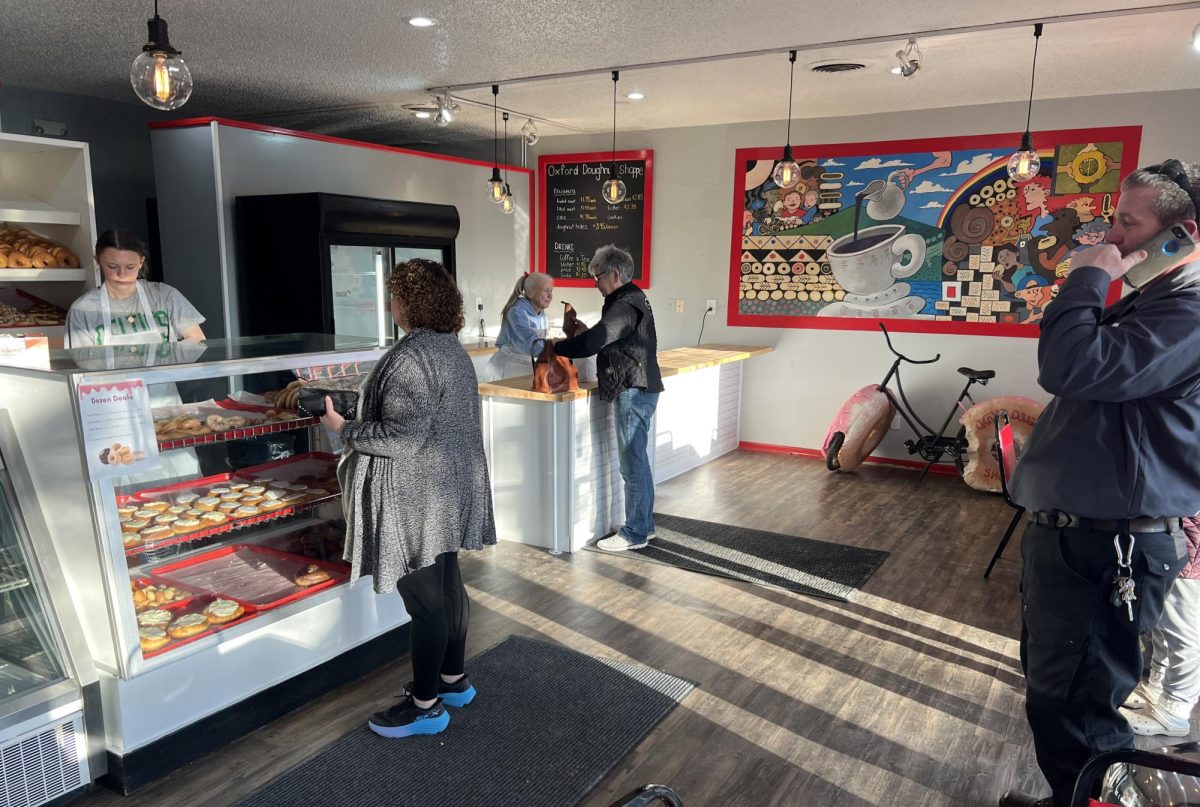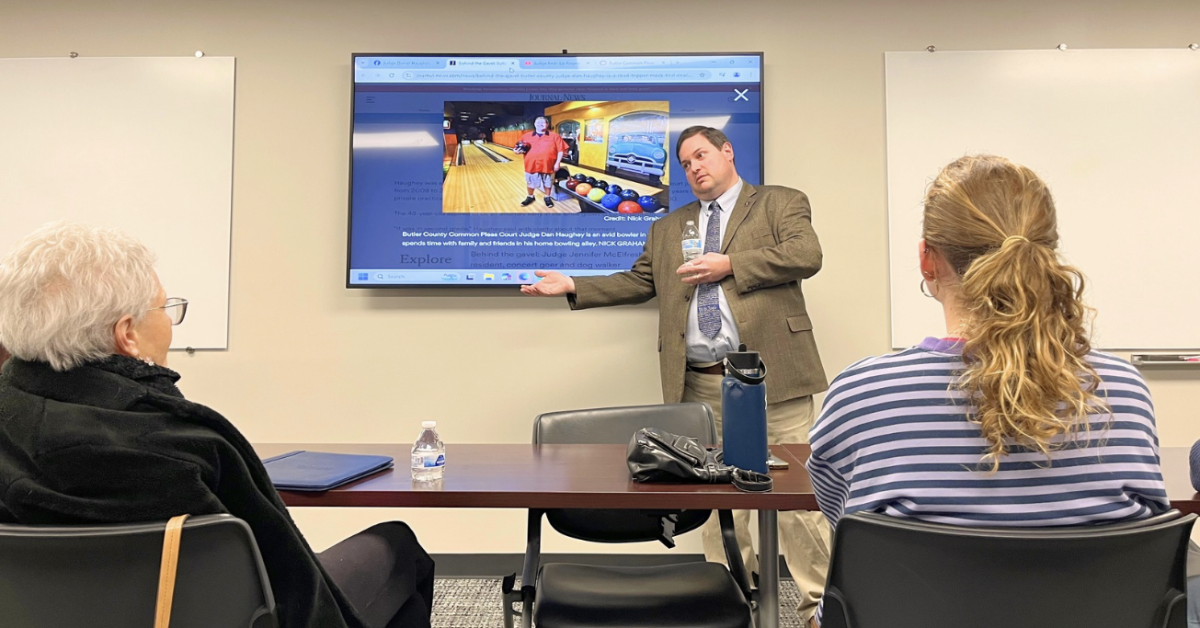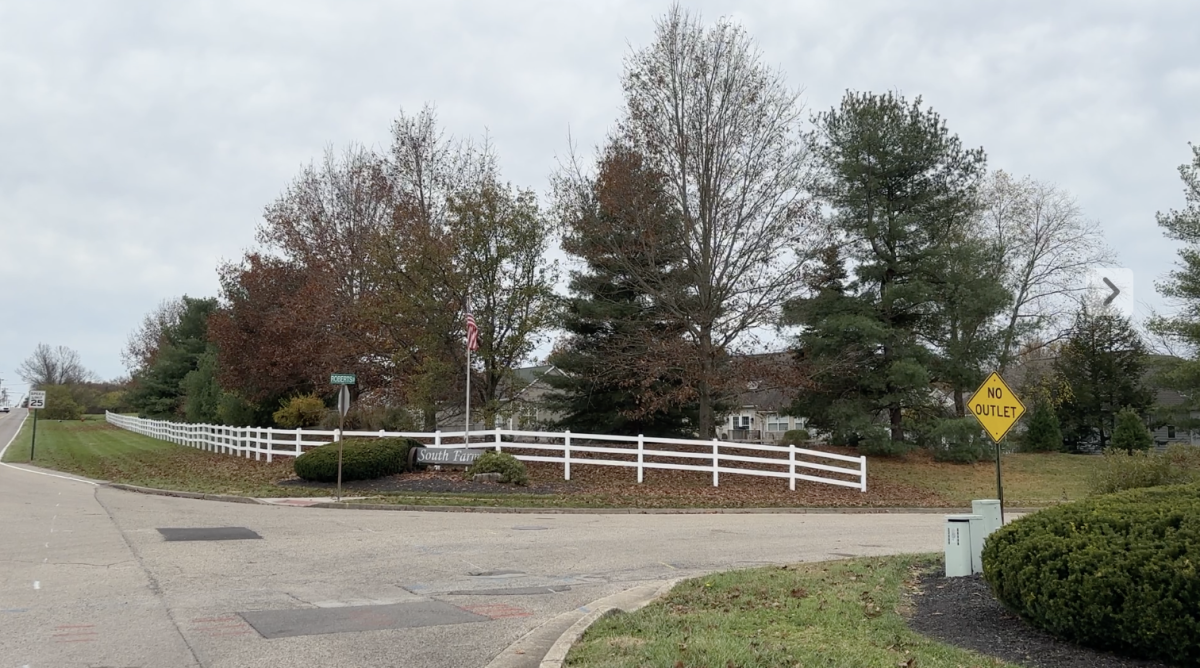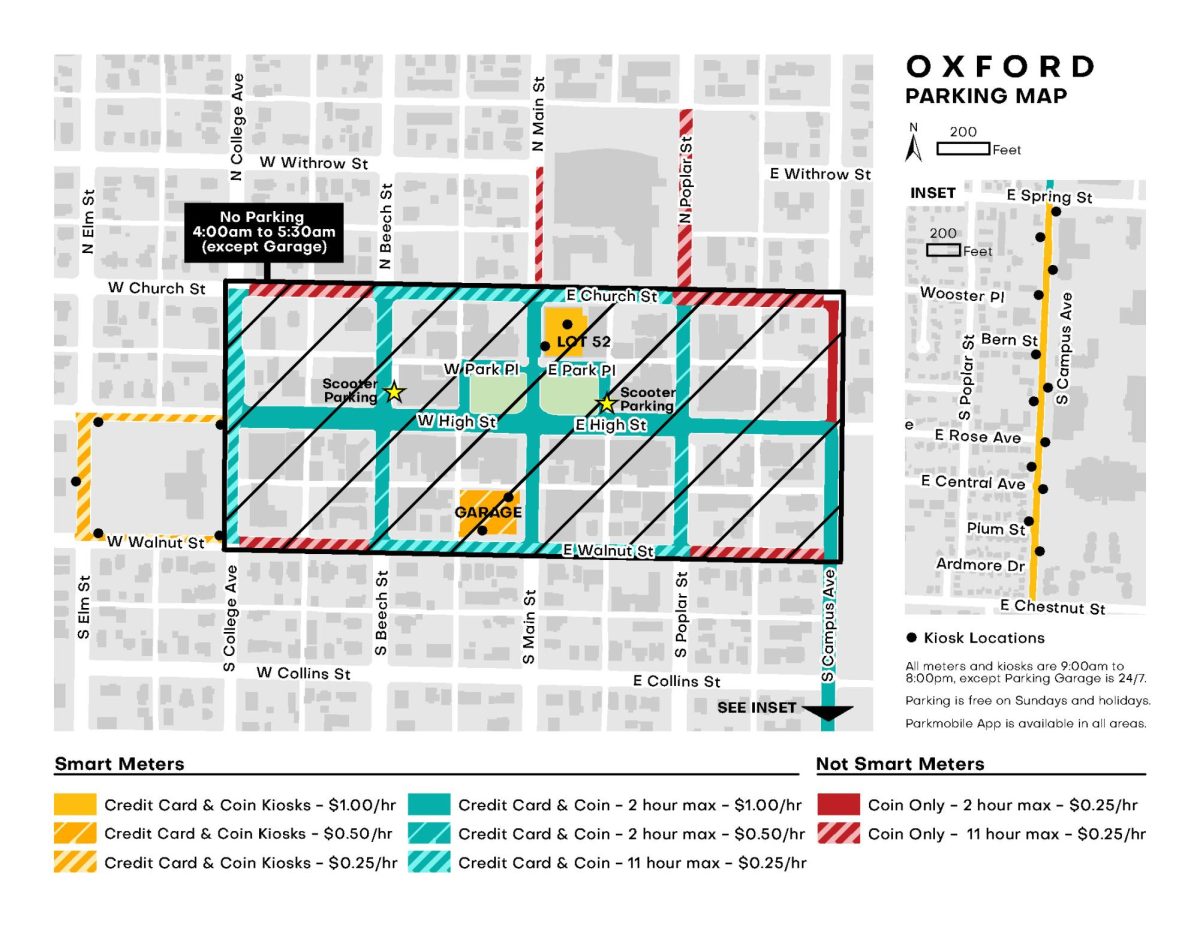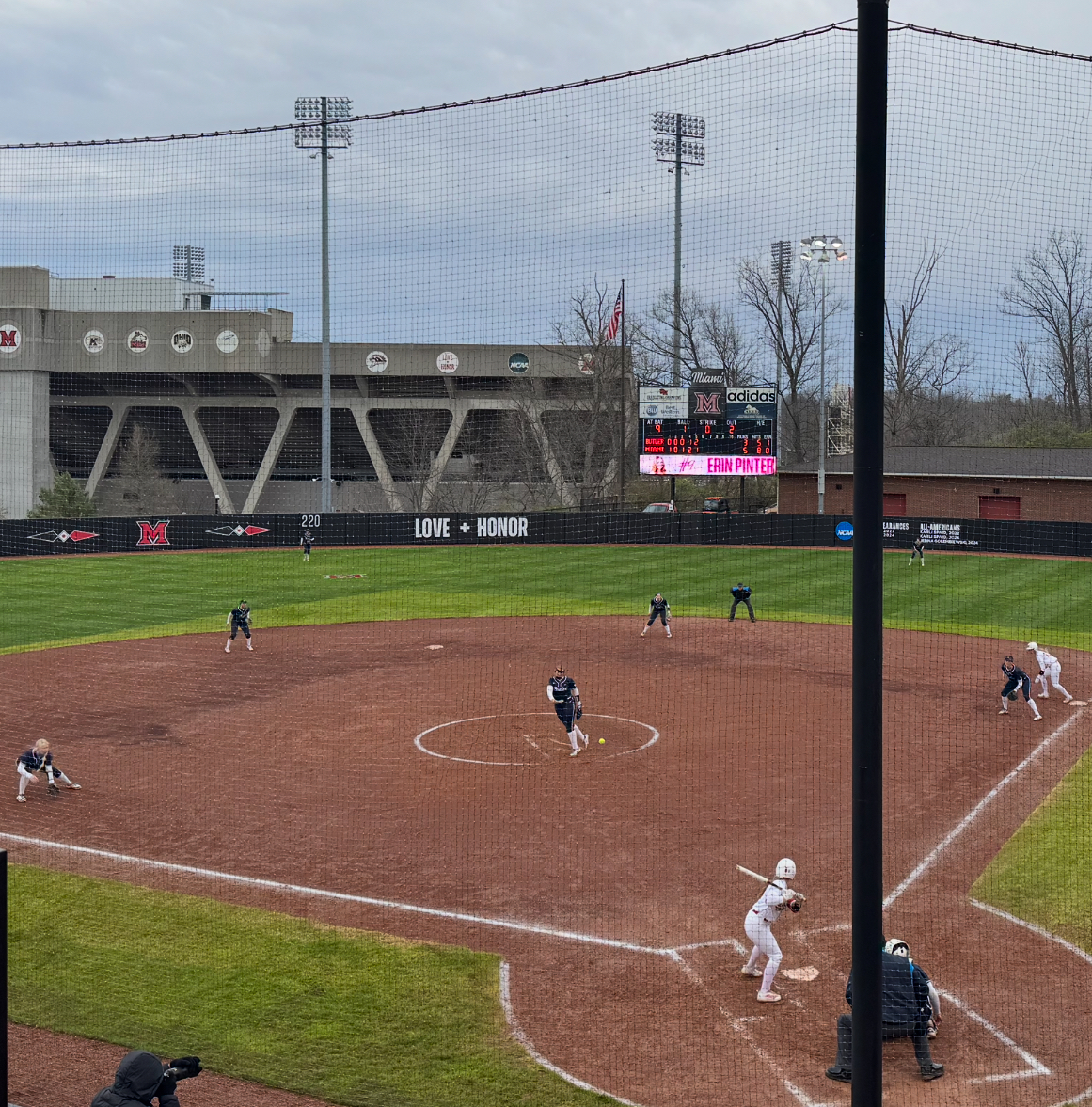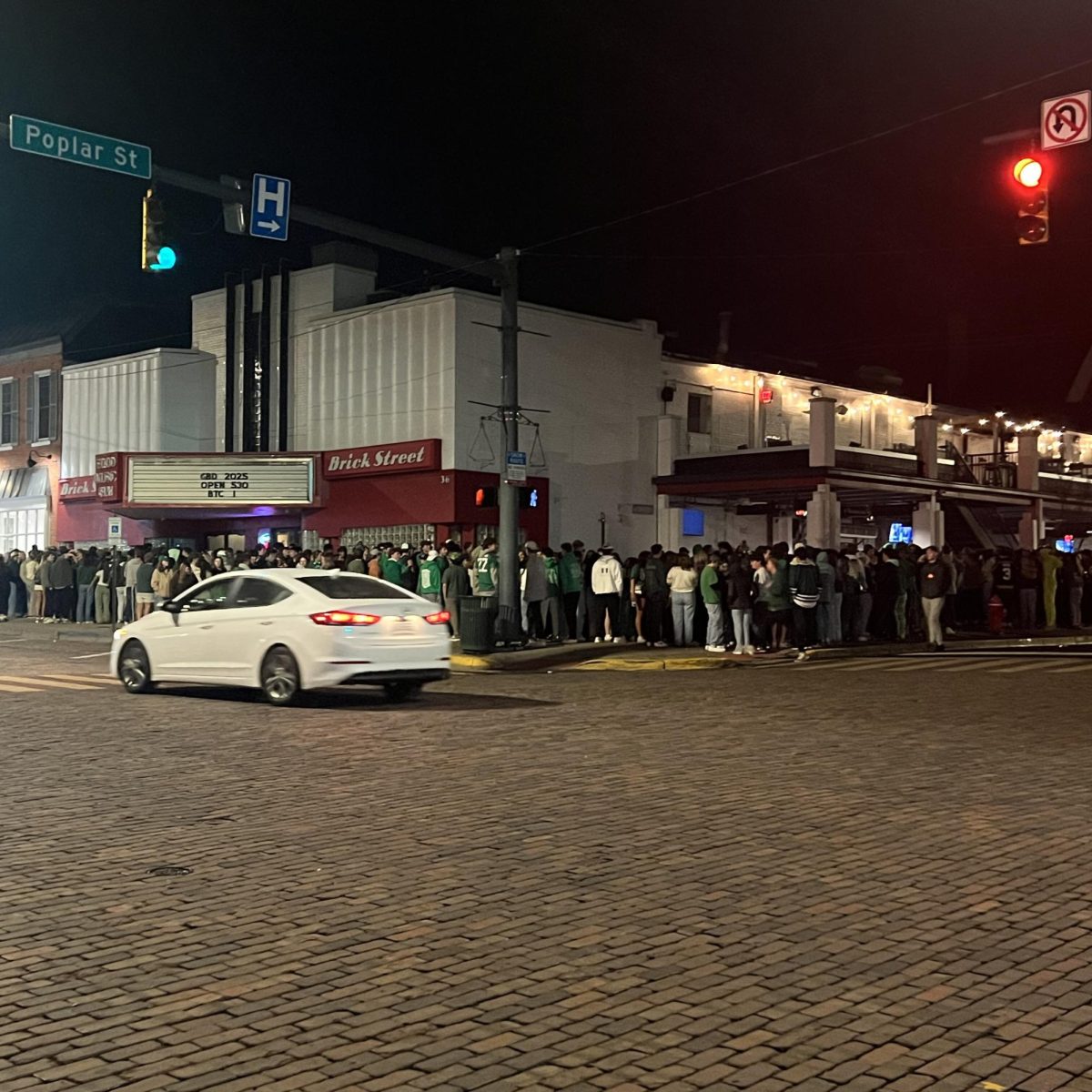Students and visitors confronted something new when driving onto campus this fall: gateways being built from Miami University’s signature red brick, announcing the entrance to Miami and to Oxford.
The roadside walls are part of the aptly named “Gateway Project” that Miami began over the summer and which are nearing completion. The project includes two main points of construction: one at the intersection of US 27 and Chestnut Street, and the other on Ohio 73, where it enters campus.
At the intersection of US 27 and Chestnut Street, the changes also include replacing part of the pavement with brick, constructing traffic islands and building a brick tower in the median. The left turn off of US 27 at that intersection is now a protected left turn with a green arrow.
On Ohio 73, the only change was moving up the crosswalk to Western campus so that it aligns with Cook Field on the north side of the road.
The project was contracted to local civil engineering firm Bayer Becker, who designed the renovations to match Miami’s signature red brick style.
The purpose of the project was twofold: both cosmetic and safety-related.
“We had a traffic study done that looked comprehensively at campus for a variety of different reasons,” said Cody Powell, Associate Vice President of Facilities Planning and Operations at Miami.
The study, conducted in 2016, identified the two points of construction as the most used entrances to the university. It found that, of the average 54,600 vehicles that drive through campus each day, no less than 43,400 of those travel on some part of the US 27 corridor on campus. Additionally, it found that, between 2013 and 2015, 60 percent of vehicle crashes resulting in injury happened on Patterson Avenue (US 27).
“Many drivers coming up the major routes maintain a high speed despite the university being a 25 mph zone,” Powell said. “The addition of islands, signs, brick paving and the tower will draw drivers’ attention to the fact that they are entering a slower area.”
According to the traffic study, “the recommended … mid-block crossing installation on Patterson Avenue will enhance pedestrian safety and visibility and are not expected to have a negative impact on traffic flow.”
As with many construction projects, not everyone was pleased with the changes. At a city council meeting on June 5, just as Miami began construction on Patterson Avenue, Oxford resident Brandon Flessner addressed the council.
“Miami’s alterations to the intersection of Patterson and Chestnut, as well as the islands along Patterson, are wasteful, harmful to traffic and will generate no safety improvements for pedestrians. There is very little public support for more islands,” Flessner said, citing multiple comments by Oxford residents with whom he had been in contact on Facebook.
He went on to express confusion and concern as to why Miami was able to construct on state roads without city permission.
“The project was developed in a vacuum inside Miami with no ability for the public to provide input,” Flessner said.
Powell said the university often hosts open forums when proceeding with construction that may affect surrounding residents. Although it did not do so for the gateway project, as construction does not directly border the property of residents, the physical facilities department presented the plans to city council at its May 1 meeting and received no objection.
Safety engineers consulted with Miami and Oxford police departments to ensure emergency vehicles would not face major obstacles upon completed construction. That led to parts of the islands on Patterson being removed from the plans so that emergency vehicles would not be hindered.
There is no change to the traffic patterns on Ohio 73, and the protected left turn is the only change to the light at US 27 and Chestnut Street.



